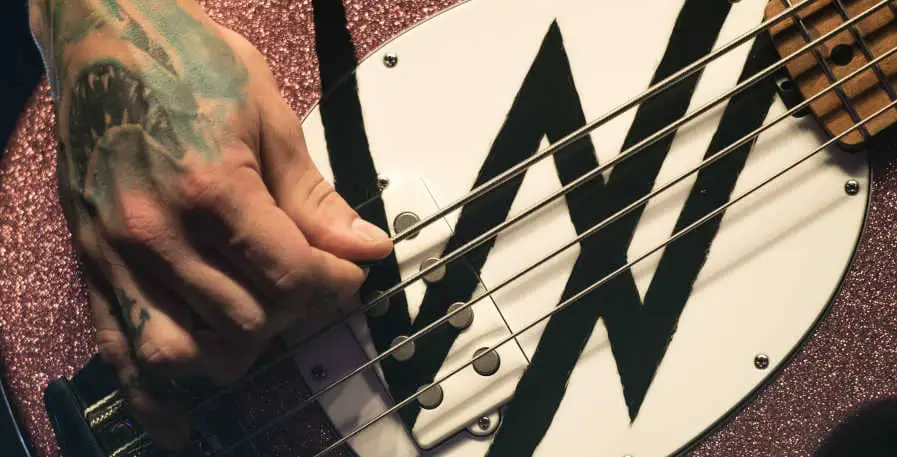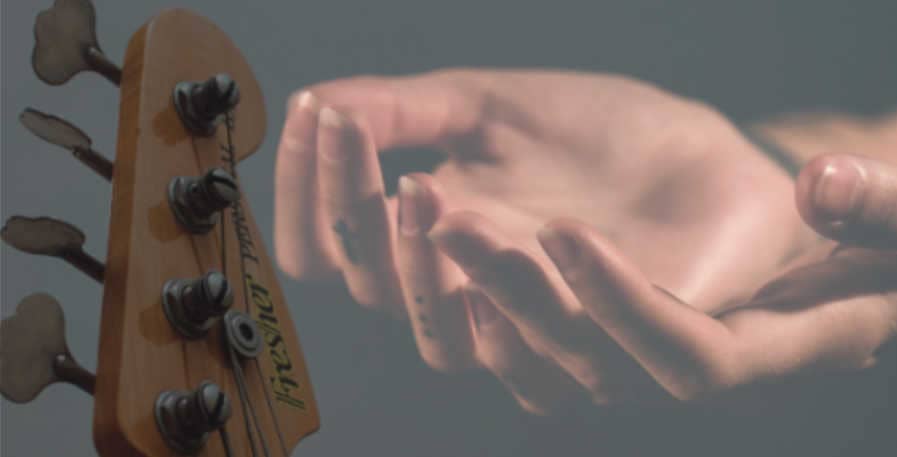The bass guitar is a big instrument with thick and heavy strings. It`s no surprise then that playing the bass regularly is going to take a toll on your fingers. But how worn exactly are your fingers going to get from playing, and most importantly, does playing bass give you calluses?
As a general rule, you can expect to develop calluses from playing the bass guitar regularly. In some cases, bassists will experience that they do not develop calluses. However, in the vast majority of these cases, the calluses that have formed are simply not as noticeable.
So while some bassists truly never develop calluses, they are in the minority. However, If you actively try to prevent them from developing, the calluses could be so unnoticeable that you don’t even notice them forming. This is generally what has happened to bassists who claim that they have never had a callus.
Due to the misconceptions around this concept, I decided to write this article to clear some things up. You will learn how long it takes to develop calluses, and how to deal with them when they do develop. I will also show you some steps you can take to prevent calluses from developing in the first place.
How long does it take to get calluses from playing the bass?
In general, developing calluses from playing bass generally takes 2 weeks to 4 weeks for beginners that play often. Bassists who play for shorter periods of time, play irregularly, and use a softer technique, generally develop calluses in 2 to 6 months.
When playing the bass, you are striking your fingers against metal multiple times a second. Your fingers will try to adjust to this new exposure and thus start becoming more resilient to it.
Most beginner bassists thus develop blisters from playing the bass at first. Blisters are a prerequisite for developing calluses, and how you deal with them impacts how long this will take.
Thus, how long calluses take to form depends on a range of factors. How much you play, how hard you play, and how you deal with your initial blisters all play a big part.
Calluses will form the fastest if you play for long periods of time irregularly. An example of this would be to play 4 hours once a week. They are also more likely to develop faster for fingerstyle and slap players, especially if you are striking the strings with a lot of force.
Beginners who just want to play the bass all time and do so before they have learned proper technique, tend to develop calluses in a matter of weeks. It can also happen to experienced bassists who take a break from playing for multiple months and then go back to playing a lot.

How do I prevent calluses on my hands from playing bass?
The development of calluses can be mitigated by using flat-wound strings and playing the bass with a pick rather than with your fingers. Furthermore, playing for shorter and consistent periods of time will decrease the chance of calluses developing, especially if you are just starting out.
Keep in mind that developing calluses is a normal part of playing bass.
You might however want to avoid developing calluses because of a profession, aesthetic reasons, or because you don`t want to deal with the pain. In this case, there are many things you can do to prevent, or decrease the chance of calluses developing.
- Use flat-wound strings – Flat-wound strings wear your fingers down much slower than round-wounds do. Bassists tend to either love or hate the sound of them, so make sure you know what you are signing up for. I personally find them to be suitable for most genres, but I would not use them for genres like punk or metal.
- Play with a pick – When playing with a pick, your picking hand is in very little contact with the strings. Thus, you are unlikely to ever develop a single callus on your plucking hand when playing with a pick. There are also several other advantages to using a pick in addition to avoiding calluses.
- Play softer – How hard you hit your fingers against the metal strings will impact callus development. The softer and slower your play, the less likely it is to happen. If you are going to take this approach, I recommend playing as softly as you can at first. Then, increase the force until you can produce a tone that you are satisfied with. Once you find this sweet spot, focus on maintaining that force as you play both slow and fast basslines.
- Play less – An unfortunate, but effective way to reduce the forming of calluses is to simply play less. If you do this, there is a right and a wrong way to go about it. If you decide to play less, make sure that you are still playing regularly. Half an hour each day means you will see regular improvement while keeping your hands healthy. If you cram all that into one 3.5 hours a week your fingers will in all likelihood get worn out fast.
How do you deal with calluses as a bassist?
Even if you try to prevent it from happening, there’s a decent chance that you will still develop calluses from playing bass. Here are some things you should do if it happens:
- Wear gloves – Some bassists wear gloves while playing to protect their hands. Personally, I found gloves to make it really difficult to play, and simply not worth it. However, if you have developed calluses, it’s a good idea to wear gloves when doing daily chores, such as yard work or doing the dishes.
- Play less, but don’t stop – When calluses start to form, it is best to not play bass too often. However, you should under no circumstance stop playing altogether. This only results in you having to go through the entire process all over again. I recommend committing to a short time frame that you can practice for daily, and sticking to it consistently. This way, you won`t have to go through this process again, while getting regular practice.
- Accept the process – This is the tip people least want to hear, but it is the most important one. Developing calluses is a normal part of becoming a bassist. Remember that this is your hands adjusting to playing the bass. It will get better with time, and as a result, your fingers will hurt significantly less when playing in the future.
Conclusion
Does playing bass give you calluses? Yes, but ultimately you should consider that a good thing. It means your fingertips are becoming more resilient and accustomed to the bass.
My recommendation is to not sweat it too much. Trying to prevent calluses altogether is not something I would generally recommend but to a select few. However, you can use the tips outlined above to increase the time it takes for them to develop. This makes the whole process less painful and less noticeable.
The most important part prior to developing calluses and during development is to not play excessively much but to still play regularly. Not all calluses are born equal, so by playing for shorter periods of time regularly you give them room to develop slowly. This will be less painful and will be less of a hindrance to your progress as a bass player.

